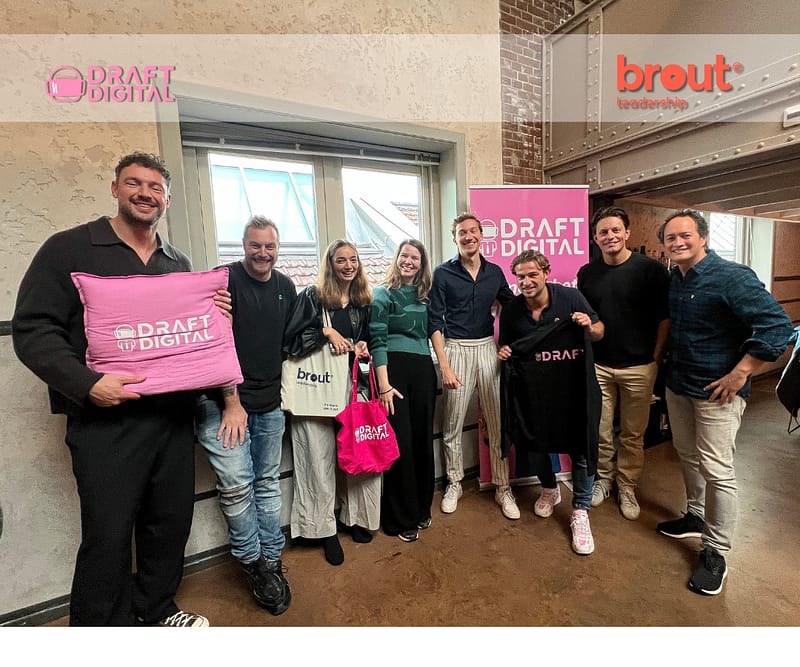Clean Rooms: A New Way to Personalize Advertising in Digital Marketing
Data has become a valuable asset for businesses. Collecting and analyzing data can provide valuable insights that lead to improved performance and decision-making. This is especially true in digital marketing and programmatic advertising, where data has been a crucial component of success. Historically, third-party cookies were used to track users across the internet, allowing advertisers to serve the right content at the right time. However, third-party cookies are set to disappear permanently in the near future, and their reliability is already far from optimal. Many browsers have already begun to largely block them.
For this reason, companies are seeking solutions to continue personalized advertising. In many cases, server-side tagging or customer match are used. However, these solutions are typically accessible to large tech companies like Google and Meta, making collaboration between Dutch publishers such as DPG Media or Marktplaats more challenging. To address this, various parties have explored ways to work together with these publishers, and the solution appears to be Clean Rooms.
What Are Clean Rooms?
Data bunkers are an emerging technology that enables secure data sharing and aggregation without exchanging the underlying data itself. Through Clean Rooms, companies can gain valuable insights and make data-driven decisions without compromising user privacy. Here are some ways data bunkers operate.
Data Aggregation in Clean Rooms
Data bunkers enable the integration of data from multiple sources without sharing the underlying data itself. Instead, aggregated and anonymized statistics and patterns are exchanged, allowing companies to gain valuable insights into trends and behaviors without exposing individual information. Moreover, only Personally Identifiable Information (PII) is used, eliminating dependence on third‑ or first‑party cookies.
Cross-Reference Analysis via a Clean Room
With data bunkers, companies can compare and analyze data across different datasets without sharing the underlying data itself. This enables businesses to gain insights into customer behavior, market trends, and other valuable information without exposing sensitive data to risk. For example, you could compare your own customer base with that of a partner, allowing you to strategically target potential new customers.
Data Security in Clean Rooms
Clean Rooms use advanced security protocols to ensure the confidentiality and integrity of data. This includes encryption, strict access controls, and monitoring of data access to guarantee that only authorized users can access the information.
Data bunkers like Infosum (www.infosum.com) & EDM (www.edm.nl) play an important role in finding a balance between privacy and performance. Data bunkers provide a secure environment to store and process data, while enabling companies to gain valuable insights without having to share the underlying data itself. By using these technologies, businesses can safeguard privacy while still benefiting from data analysis and insights.
So, there is a way to securely share data between different parties, but how does this work in practice, and how could it be used?
Example of How to Use a Clean Room
In this example, we’re working with the company Draft, which wants to purchase ads on NU.nl.
- Both Draft and NU.nl upload personal data into their own clean rooms.
- Draft only uploads the data they want to target into the clean room. For example, people who have previously made a purchase.
- NU.nl uploads all their data into the clean room to increase the chances of finding matches. Additionally, NU.nl must provide an ID that is used within their advertising platforms.
- It’s important to regularly coordinate how the data is structured. For example, if matching is based on postal codes, it’s crucial that the data is formatted consistently.
- Once the data is in the data bunkers, it is matched and sent back, including IDs, to NU.nl’s advertising platform.
- Draft can now purchase inventory based on these IDs through NU.nl and re-engage the target audience.
We can conclude that data bunkers offer a solution to use your own data on external platforms, but what exactly can you do with them?
How Can You Use Clean Rooms to Improve Digital Performance?
Targeting
In addition to being able to find users again, it can also be used to exclude certain customers. Look-alike audiences can also be leveraged. Since the external platform can see what these users do within their own environment, it can search for people who resemble the initial group. This allows you to deliver more relevant ads.
Data Enrichment
By matching data with external platforms, it’s also possible to learn from this data. If you share data with Marktplaats, for example, you can discover which categories your target audience frequently browses or uses. If your audience is interested in interior design, this insight can serve as a valuable hook for other marketing efforts.
Channels
In principle, data bunkers can be utilized across all channels where CRM data is matched. Currently, this is mostly applied in display and video advertising in collaboration with partners such as DPG Media, Mediahuis, and Marktplaats. However, it should also be feasible on more traditional channels like TV. TV platforms use set-top boxes that store personal data. Although addressable advertising on TV is not yet common practice in the Netherlands, it is expected to become possible in the near future: https://www.adformatie.nl/media/adverteerders-kunnen-tv-commercials-bij-talpa-en-rtl-richten
From then on, more and more opportunities for personalization on TV will emerge. In Belgium, this is already possible.
Retail Media and Clean Rooms
Naast reguliere advertising zien we ook een trend op het gebied van retail media. Grote partijen zoals Albert Heijn, Jumbo, MediaMarkt en Amazon zijn hiermee aan het experimenteren in Nederland. Doordat deze retailers over zeer veel first party data beschikken kan een databunker ook de connectie zijn tussen de data van retailpartner en adverteerder. Hierdoor zijn ze niet afhankelijk van reguliere customer match oplossing.
Conclusion
Alongside traditional advertising, we’re also seeing a growing trend in retail media. Major players like Albert Heijn, Jumbo, MediaMarkt, and Amazon are experimenting with this in the Netherlands. Since these retailers possess extensive first-party data, a data bunker can serve as the bridge between the retail partner’s and the advertiser’s data. This means they aren’t reliant on standard customer match solutions.
Thanks to data bunkers, companies can collaborate with external partners, such as publishers, to deliver personalized ads to the right audience without directly sharing first-party data. This opens new opportunities for advertising across various channels, including digital platforms and, in the future, even traditional channels like television.
Using data bunkers requires close coordination between the involved parties, such as the company sharing the data and the platform receiving it. Ensuring proper data structuring and agreement on the identifiers used is crucial to guarantee successful matching.
Contact
All in all, data bunkers offer a promising solution to balance privacy with personalized advertising. Through secure data sharing and advanced analytics, companies can gain valuable insights and deliver targeted ads while protecting individual user privacy. It’s a positive step forward for the future of data-driven marketing. If you’d like to receive more information about data bunkers, please contact us at get in touch with us .







